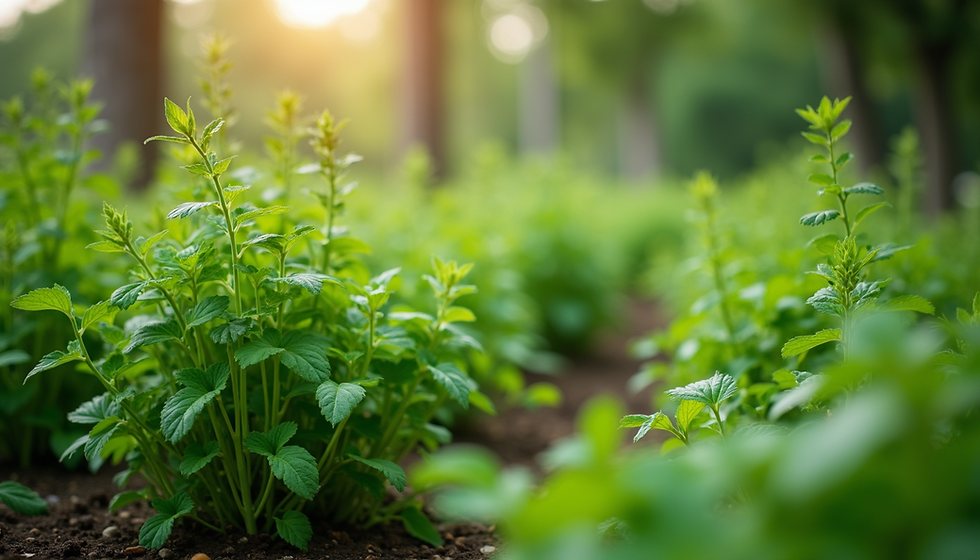The Case for Insects as Food
- Mieke Goffin
- Sep 22
- 3 min read
Crunch. Snap. A burst of earthy flavor. Insects on the plate. Unfamiliar? Perhaps. Necessary? Absolutely. The world’s appetite grows. Resources shrink. We must rethink what fills our bowls. Insects offer a vibrant, sustainable food option. They are nature’s tiny powerhouses, packed with protein, vitamins, and minerals. They require less land, water, and feed than traditional livestock. The future of food is buzzing with promise.
Why Sustainable Food Options Matter Now
The clock ticks. Climate change accelerates. Agriculture strains under the weight of billions. Conventional meat production consumes vast resources and emits greenhouse gases. The search for sustainable food options is urgent. Insects emerge as a compelling answer.
Efficiency: Crickets need six times less feed than cattle to produce the same amount of protein.
Water use: Insect farming uses a fraction of the water required for beef or pork.
Land footprint: Tiny farms, vertical setups, minimal space.
Low emissions: Insects produce fewer greenhouse gases and ammonia.
Imagine a world where food production harmonizes with nature. Where every bite supports the planet’s health. Insects fit this vision perfectly. They are not just food; they are a solution.

Nutritional Powerhouses on Your Plate
Insects are more than just protein. They offer a rich nutritional profile that rivals or surpasses traditional meats.
Protein: High-quality, complete proteins with all essential amino acids.
Healthy fats: Omega-3 and omega-6 fatty acids.
Micronutrients: Iron, zinc, magnesium, and B vitamins.
Fiber: Chitin, a form of dietary fiber, supports gut health.
Consider mealworms, crickets, and grasshoppers. Each species brings unique flavors and textures. Roasted crickets have a nutty crunch. Mealworms offer a mild, buttery taste. These flavors can be incorporated into snacks, protein bars, flours, and even gourmet dishes.
For businesses, this means innovation. For consumers, a chance to diversify diets with nutrient-dense, sustainable options. The culinary possibilities are vast and exciting.

Is Tyson Adding Insects to Food?
Tyson Foods, a giant in the meat industry, is exploring insect protein. This signals a shift in mainstream acceptance. Tyson’s investment in insect farming startups and protein powders shows confidence in this emerging market.
Why does this matter? Because large-scale adoption by industry leaders can accelerate innovation and reduce costs. It also helps normalize insects as food in Western markets, where cultural barriers exist.
Tyson’s move encourages other companies to experiment with insect-based products. Protein bars, snacks, and even pet foods are already hitting shelves. This momentum is crucial for scaling sustainable food options.
Businesses should watch this trend closely. Partnering with insect protein suppliers or developing new products can position brands at the forefront of food innovation.

Overcoming Barriers: Taste, Culture, and Regulation
Challenges remain. Taste preferences, cultural perceptions, and regulatory frameworks can slow adoption. But these hurdles are not insurmountable.
Taste: Culinary creativity can transform insects into delicious dishes. Seasoning, roasting, and blending with familiar ingredients help ease the transition.
Culture: Education and exposure are key. Highlighting insects’ role in traditional diets worldwide builds acceptance.
Regulation: Governments are beginning to establish safety standards for edible insects. Clear guidelines will boost consumer confidence.
For innovators, the path forward involves transparency, quality control, and storytelling. Share the benefits. Celebrate the heritage. Make insects a desirable choice, not a last resort.
Practical Steps for Businesses and Innovators
Ready to embrace insects as food? Here’s how to start:
Research suppliers: Find reputable insect farms with sustainable practices.
Develop products: Experiment with insect flours, protein powders, and snacks.
Educate consumers: Use marketing to highlight health and environmental benefits.
Collaborate: Partner with chefs, nutritionists, and sustainability experts.
Monitor regulations: Stay updated on food safety laws and certifications.
By integrating insects into product lines, businesses can lead the charge toward a resilient food system. Consumers gain access to nutritious, eco-friendly options. The planet breathes easier.
Explore more about insects future food and how it can transform your culinary vision.
A New Chapter in Food Innovation
The case for insects as food is compelling. They offer a sustainable, nutritious, and versatile alternative to traditional proteins. The journey is just beginning. As we embrace these tiny creatures, we unlock a future where food nourishes both people and planet.
The buzz is real. The opportunity is now. Let’s shape the future of food together - one crunchy bite at a time.




Comments